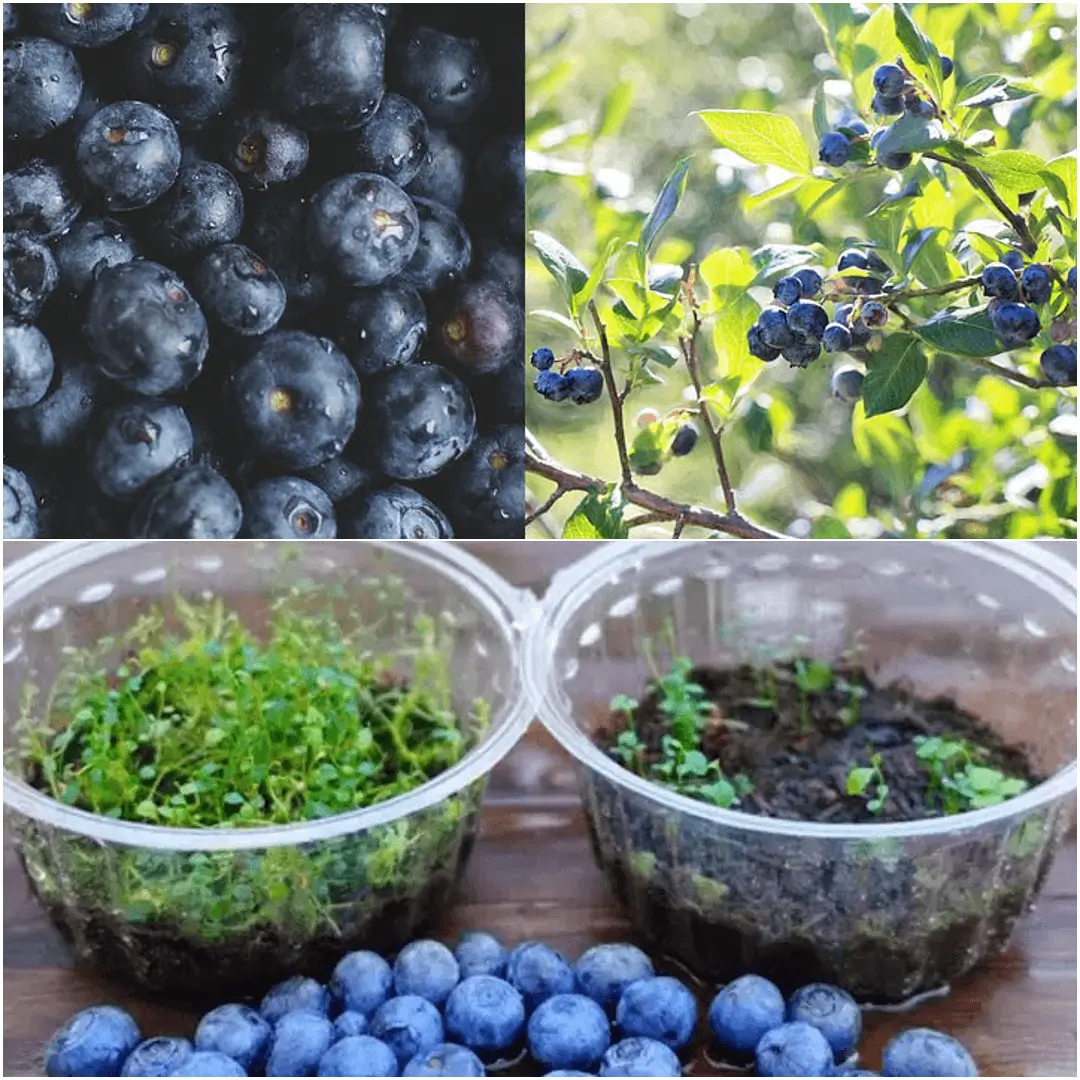Growing blueberries can be an incredibly rewarding experience. Whether you’re dreaming of adding fresh, juicy berries to your morning cereal or planning to bake homemade pies, blueberries are a versatile and delightful fruit to grow in your garden. In this guide, I’ll take you step by step through the process of how to grow blueberries successfully, from choosing the right variety to mastering the soil requirements and ensuring a plentiful harvest. Let’s dive in!
Understanding Blueberry Varieties and Climate
Before you start planting, it’s crucial to know that blueberries aren’t a one-size-fits-all fruit. Their success largely depends on the variety you choose and the climate in which you live.
Selecting the Right Variety for Your Climate
Some blueberry varieties are bred specifically for certain climates. For example, the University of Minnesota has developed varieties perfect for the Upper Midwest’s harsh winters. If you live in USDA zones 3 to 8, you’ll want to pick varieties that are winter-hardy and suited for your region. Not sure which zone you’re in? You can find this information easily by checking a USDA plant hardiness zone map.
Popular Blueberry Varieties
Here are some common varieties to consider:
- Chippewa: Great for cold climates and produces medium-sized berries.
- Northblue: Known for its hardiness and rich flavor.
- Polaris: Offers excellent yields and handles colder regions well.
- St. Cloud: Another excellent option for cold climates, producing large berries.
Winter Hardiness
Blueberries can be sensitive to freezing temperatures. If your winters are particularly harsh, opt for varieties known for winter hardiness to ensure your bushes survive and thrive year after year.
Planting and Growing Blueberries
Now that you’ve chosen your variety, it’s time to get those bushes in the ground! Blueberries require specific conditions to grow well, so let’s explore what they need.
Time to Maturity
Patience is key when growing blueberries. These bushes can take about 10 years to reach full maturity, but don’t worry—you can expect noticeable harvests within 2 to 3 years. The wait will be worth it!
Sunlight Requirements
Blueberries love the sun! They grow best when exposed to full sunlight for at least six hours a day. While they can tolerate partial shade, too much shade can reduce the number of blossoms, which means fewer berries. So, choose a sunny spot in your garden.
Spacing Blueberry Plants
Proper spacing ensures your bushes have enough room to spread out. Plant them about 3 feet apart, but if you’re planting a larger variety, give them a bit more space—up to 5 feet. This will also help with air circulation, reducing the risk of disease.
When to Plant
The best time to plant young blueberry bushes is in late April or early May. This gives them plenty of time to establish roots before the heat of summer sets in.
Mulching
Mulch is your blueberry bush’s best friend. After planting, apply a thick layer of mulch (sawdust, peat moss, oak leaves, or pine needles) around the base of the plant. This helps to maintain soil moisture, prevent weeds, and keep the soil at the right temperature. Plus, it helps preserve the soil’s acidity, which is essential for blueberry growth.
Watering Your Blueberries
Watering is crucial in the early stages. Blueberries prefer soil that is moist but not waterlogged. Water deeply and frequently, especially during dry spells. You’ll want to make sure the soil stays consistently moist but never soggy.
Soil Requirements for Blueberries
One of the most important factors for growing healthy blueberries is the soil. These plants are picky about their soil conditions, especially when it comes to acidity.
Soil Acidity
Blueberries thrive in acidic soil, with a pH between 4.0 and 5.0. If your soil has a pH above 5.5, you’ll likely notice stunted growth and poor fruit production. To keep your blueberry bushes happy, regularly monitor the soil’s acidity.
Amending the Soil
If your soil isn’t naturally acidic, you can lower the pH by adding sulfur or sphagnum peat moss. The best time to do this is the fall before planting, as it takes several months for sulfur to lower the soil’s pH. If you need an immediate fix, peat moss works well, though it’s a temporary solution.
Testing the Soil
Invest in a soil testing kit to monitor the pH over time. You’ll want to test your soil before planting and continue testing periodically to ensure the acidity levels remain within the ideal range.
Fertilizing Blueberries
Blueberries aren’t heavy feeders, but they do appreciate a little extra nutrition, especially if the soil quality isn’t great.
Choosing the Right Fertilizer
To keep your plants healthy, use organic, acid-based fertilizers—those formulated for azaleas and rhododendrons are ideal. If your blueberry bushes are growing slowly or their leaves start turning light green or red, it might be time to fertilize.
Maintaining Soil Quality
A few inches of wood mulch around your plants can help maintain the soil’s quality. Mulch also reduces the need for frequent fertilization since it slowly breaks down and releases nutrients into the soil.
Pruning Blueberry Bushes
Pruning is essential for maintaining healthy blueberry plants and ensuring maximum fruit production.
When to Prune
You should prune your blueberry bushes in early spring before new growth begins. This will give the plant time to recover and focus its energy on producing fruit rather than unnecessary foliage.
How to Prune
The goal is to keep the bush open by removing any dead wood, weak stems, or old shoots. This allows sunlight to reach the inner parts of the plant and encourages new shoot growth, which is where most of the fruit will develop.
Harvesting Blueberries
One of the most exciting parts of growing blueberries is harvesting those plump, juicy berries!
Knowing When to Harvest
Blueberries are ready to pick when they turn completely blue and feel slightly springy to the touch. The berries ripen over a couple of weeks, so you’ll need to check your bushes regularly and harvest them as they become fully ripe.
Storing and Freezing Blueberries
Freshly picked blueberries can be stored in the fridge for up to two weeks. To prevent mold, avoid washing them until you’re ready to eat them. If you want to enjoy blueberries year-round, freeze them! Simply wash and dry the berries, spread them on a baking sheet to freeze, and then transfer them to an airtight container.
Pest and Disease Management
While blueberries are relatively low-maintenance, they aren’t immune to pests and diseases.
Common Pests
You might encounter Japanese beetles or spotted wing drosophila, though these pests generally aren’t too much of a problem. Rabbits and deer may also nibble on your bushes, so consider putting up a fence if wildlife is an issue.
Preventing Disease
Proper pruning and care can help prevent diseases like cankers. Ensuring good air circulation and sunlight penetration will keep your bushes healthy and productive.
Dealing with Soil Challenges
Sometimes, despite your best efforts, your soil may still pose challenges for growing blueberries.
High pH Problems
If your soil’s pH is too high, you may notice chlorosis (yellowing of the leaves), slow growth, and poor fruit production. You can address this issue temporarily by applying foliar iron sprays, but for long-term success, you’ll need to amend the soil to lower the pH.
Growing blueberries can be a fun and rewarding process if you take the time to understand their unique needs. From choosing the right variety and ensuring proper soil acidity to mastering the art of pruning and harvesting, you’ll soon be enjoying a bountiful harvest of delicious, homegrown blueberries. Remember, it’s all about patience and consistent care!
FAQs:
Where do blueberries grow best?
Blueberries grow best in areas with full sunlight and acidic soil with a pH between 4.0 and 5.0. They also need well-drained soil and prefer regions that experience cold winters.
What is the best month to grow blueberries?
The best time to plant blueberry bushes is in late April or early May, depending on your climate. This allows them to establish their roots before the hot summer months.
How do you make soil acidic for blueberries?
To make soil more acidic, you can add sulfur or sphagnum peat moss. Sulfur takes several months to lower the pH, so it’s best applied in the fall before planting.
What is a natural fertilizer for blueberries?
Compost, blood meal, or organic acid-based fertilizers formulated for azaleas or rhododendrons are great natural options for blueberries.


